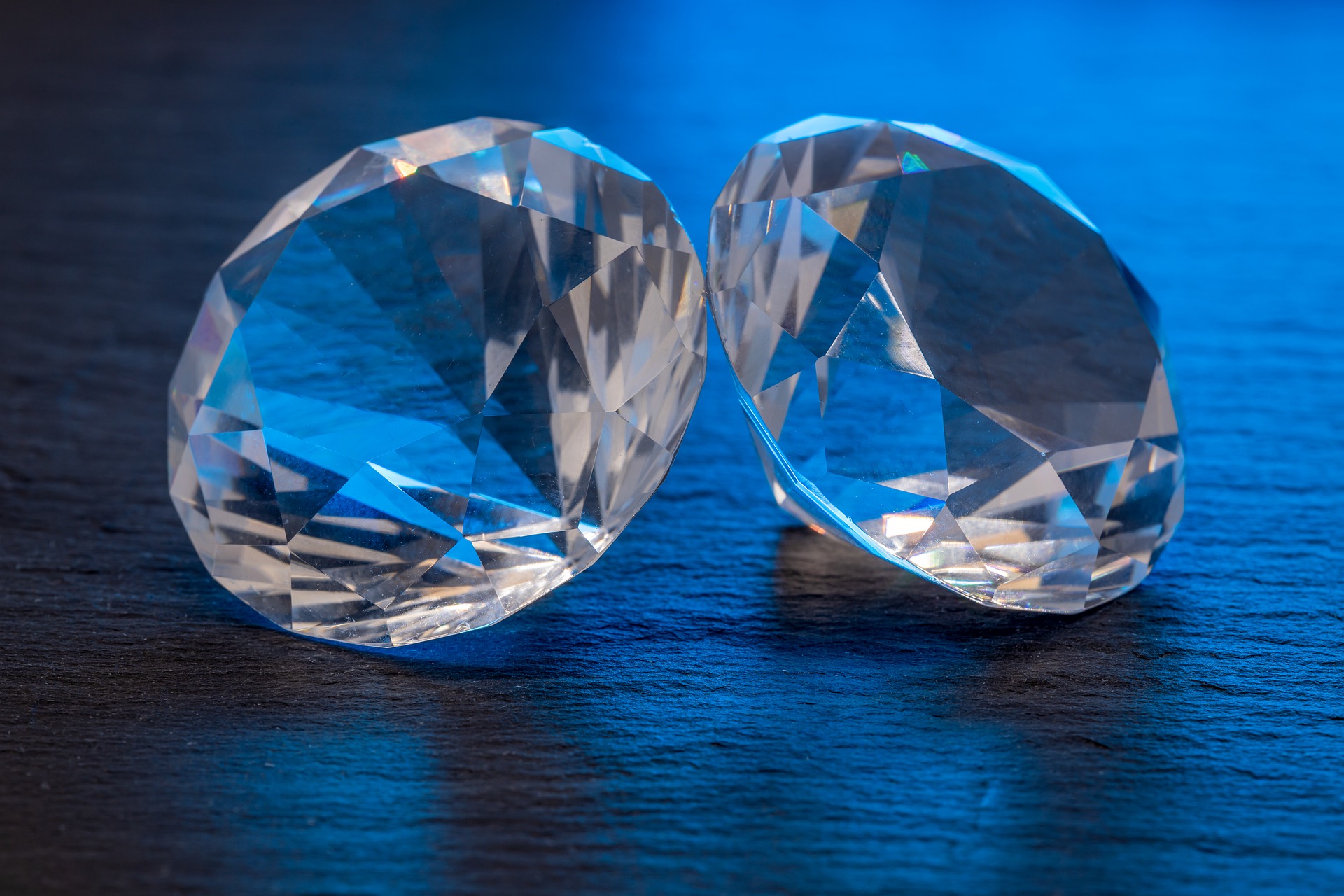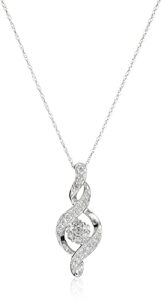If you’ve ever wondered which is more challenging, a diamond or a quartz stone, you may be surprised that diamonds are more complicated than quartz. The two are made from carbons, while quartz is composed of silicon and silicon dioxide. However, there are some significant differences between these two gemstones, and you’ll want to learn all about them to decide which is better for you. This article will help you decide, but first, let’s look at the differences between the two.
There are many differences between the two, starting with the specific gravity. Diamonds are more complicated than quartz, and their specific gravity is 3.1 to 3.5, while quartz has 2.6 to 2.7. The difference between the two materials’ density is one of the most important factors when deciding which gemstone to buy. Also, both gemstones are ionic, meaning that the harder one is, the harder it is. However, you can’t distinguish between the two materials by simply looking at their size.

Which is Harder? Diamond or Quartz?
Quartz is a seven on the Mohs hardness scale, while diamond is a 10. When comparing the hardness of quartz and diamond, there is no doubt that diamond is the superior material. A gemstone with a value of 7 is about as low as it can get for usage in jewelry. Quartz is softer than diamond, and it is the hardest gemstone on the planet.
The hardness of quartz is such that it can scratch steel. Sharpening knives are commonly done using novaculite, a quartz type. Countertops are another application for quartz. As a result, while being a more common and less expensive gemstone, quartz is nevertheless suitable for jewelry. Most compounds are chemically inert to quartz. It’s also used in electronics because of its high heat resistance and electrical characteristics.
Here are Some Beautiful Diamond And Quartz Jewelry
Amazon Collection 10k Diamond Pendant Necklace, 18.”
Features
- A diamond-accented twisted infinity pendant with a cluster of diamonds dangling in the center hangs on a 10k white gold necklace.
- Clasp with a spring-ring
- To ensure that their diamonds are conflict-free, our diamond suppliers declare that they follow the Kimberley Process.
- The total weight of imported carats stated is the total weight of all stones.
Anemone Jewelry Elegant Rose Quartz Ring in 14k Rose Gold – Handmade Jewelry for Birthdays, Anniversaries, Parties – Classy Fashion Rings for Women – Free Gift Box
Features
- It could be a wedding band, a birthday ring, or an anniversary ring.
- Bands can be customized with a variety of metals to pick from.
- Engraving is an option.
- The gift box is nickel-free and tarnish-resistant
What is the Difference Between Diamond and Quartz According to Clarity?
The clarity of quartz and diamond is rated on different scales. Because of their superior purity, clear diamonds with no inclusions are more valuable. On the other hand, inclusions can be a desirable feature in some gemstones. For example, people enjoy “silk” in sapphire and “horsetail inclusions” in demantoid garnet. Colored gemstones have their clarity scale, with Type 1, Type 2, and Type 3 being the most common.
Quartz comes in various shapes and sizes, and not all of them belong in the same category. Type 1 clarity is seen in smoky quartz, citrine, and amethyst. Type 1 gemstones are usually eyeing clean, meaning no visible inclusions to the naked eye. Because some amethyst and citrine have modest visible inclusions, they are classified as Type 2 gemstones.
FL (flawless), IF (internally faultless), VVS1-VVS2 (very, very slightly included), VS1-VS2 (very slightly included), SI1-SI2 (slightly included), and I1-I3 (internally flawless) (included). The most delicate clarity is seen in flawless diamonds, as expected. They are imperfections that can be seen under 10x magnification and do not have any inclusions.
Diamonds with no flaws are scarce. FL diamonds account for less than one in every 5,000. Many people believe that as long as a diamond is eye clean, the clarity level doesn’t matter because the inclusions are invisible to the human eye. Diamonds of a VS1 or higher grade are considered eye-clean. When examined closely with the naked eye, inclusions can sometimes be seen in VS2 diamonds.
What is Gemstone Hardness and What does it Mean?
The feature of gemstone hardness is widely misunderstood. In gemology, the term “hardness” has a particular scientific meaning that differs significantly from its colloquial connotation. The ability to resist scratching is the only scientific definition of hardness. Most people would tell you that feathers are soft and glass is hard. Glass, on the other hand, is a rather delicate material in the realm of gemology, and it might easily be scratched by what gemologists consider complex substances.
The bonds that hold the atoms together inside a crystal structure determine the hardness of the material. The ease with which the layers of atoms at a surface can be separated by exerting pressure on a sample of another material demonstrates this bonding. If the second material is more complicated than the first, a furrow, or scratch, will appear. This entails the dissolution of millions of atomic bonds on a microscopic scale. The “scratchability” determines its hardness, and every mineral can be evaluated based on how well it scratches other minerals.
What does “Wearability” Mean in Gemstones?
Scratching is a more common hazard, assuming you don’t repeatedly pound your jewelry with a hammer. Consider how often you put your hands into pockets, handbags, glove compartments, and desk drawers daily. Consider what comes into contact with a ring when you do those tasks.
The degree to show wear is primarily determined by its hardness. Wearability or “durability” are terms used to describe this. If worn as a ring stone every day, an opal with a hardness of 6 will quickly get covered in fine scratches and lose its shine. Remember that quartz is a component of dust and one of the most prevalent minerals (hardness 7). A softer substance will be scratched simply by wiping away dust. The scratches may be minor, even microscopic, but they will become evident over time. On the other hand, ruby, with a hardness of 9, will remain bright and lustrous for years because it is more complicated than most abrasive particles that lead to wear.
What do you Understand by the Jewelry Setting?
Another critical component in gemstone wearability is the jewelry settings. The most common application of jewels in jewelry rings. On the other hand, rings are subjected to more incredible abuse than any other type of jewelry. Pendants, earrings, and brooches are better for stones with a poor wearability grade (such as moonstone).
Consider the following possibilities if you want your soft stone in a ring:
Instead of wearing the ring every day, save it for special occasions, which will drastically limit the amount of harm done over time.
Avoid wearing a ring with an exposed setting. A Tiffany setting with a few prongs that hold the crystal well above the finger only begs for trouble. Even during normal wear, the stone will come into contact with several items that may scratch it.
Choose a setting with a lot of metal around it to safeguard the gem. Gold is a soft metal that can be readily polished and replaced when it wears out. You probably can’t say the same about your diamond!
What does Gemstone Cleavage Mean?
Cleavage refers to the strength with which a gemstone’s molecules connect. To put it another way, it’s similar to wood grain. Splitting a piece of wood along the grain is simple, but splitting it across the grain is far more complex. Cleavage planes are found in many gems and vary by gem species. Cleavage can be characterized as follows, depending on how easily the mineral separates along the planes:
Perfect
Good
Fair
Poor
The mineral will split easily if it has perfect cleavage. Minerals with weak cleavage resistance will not split. Some diamonds have no cleavage planes at all and they have no cleavage, according to the description.
Have you ever seen diamond cutters working on enormous diamond crystals in old movies? They use brisk and carefully calculated strokes to chisel the crystals. If done correctly, the result is two flawless pieces that can be carved into stunning diamonds. The diamond shatters if done incorrectly.
Although diamond cutters are no longer required to do so, this is an excellent example of the impact of gemstone cleavage. Diamonds are the most challenging natural substance and have beautiful cleavage, and they can quickly split along cleavage planes because of this. If done correctly, this can be a massive help for cutting. Diamonds, however, can chip or fracture as a result of wear. On the other hand, quartz is less demanding than diamond yet can withstand a lot of pounding without breaking.
What do you Understand by Tenacity?
As scientifically described, returning to the ancient adage, a diamond is complicated and fragile. A hammer’s steel (hardness 5 or 6) will not scratch a diamond, but it will shatter it.
“tenacity” refers to a material’s ability to withstand strikes. These measures are generally offered as descriptive phrases for gemstones. The majority of gemstones are “brittle,” as it happens. There are a few exceptions to this rule. The tenacity of cryptocrystalline quartz, such as chalcedony, is “tough.” The tenacity of jade, both jadeite, and nephrite, is described as “very tough.”
Conclusion
When comparing diamond vs. quartz, remember that the odds are against finding a diamond if you are looking for one in the wild. You’ll need to check the shape, fracture surfaces, and whether the crystal scratches a corundum crystal. You can use a diamond tester to make the decision. These tools measure thermal absorption, and they can determine the size and shape of diamonds. It’s also essential to understand the different formation processes of the two stones.
While both gemstones are beautiful and can be worn as jewelry, they’re not the same. A clear quartz stone has a similar appearance and is available at specialized stores. It can be cut into different shapes, and it’s difficult to tell the difference. Although quartz is softer than diamond, it’s still durable and strong. Quartz is far less expensive than diamonds. The difference in price and appearance makes the two gemstones even more remarkable.










